#peptidoglycan
Text
Watch what happens to Germs when you wash your hands with Soap at microscopic level. 🔬 The Soap molecules surround germ cells and disrupt their cell walls, causing them to burst.
Germ cells are surrounded by a cell wall that protects them from the environment. This cell wall is made up of a layer of peptidoglycan, which is a polymer of amino acids and sugars. Soap molecules are made up of two parts: a hydrophobic (water-fearing) tail and a hydrophilic (water-loving) head. When soap is added to water, the hydrophobic tails group together and the hydrophilic heads face outward, forming micelles. These micelles can surround germ cells and the hydrophobic tails can then disrupt the cell walls, causing the cells to burst.
The hydrophobic tails of the soap molecules can disrupt the cell wall in two ways. First, they can bind to the peptidoglycan molecules and weaken the bonds between them. Second, they can create holes in the cell wall. Once the cell wall is disrupted, the germ cells lose their internal contents and die.
It is important to note that soap only works to kill germ cells that are surrounded by a cell wall. Germ cells that do not have a cell wall, such as viruses, are not affected by soap.
The size of the soap micelles is important. Micelles that are too small will not be able to surround the germ cells. Micelles that are too large will not be able to penetrate the cell walls.
The concentration of soap is also important. A higher concentration of soap will be more effective at killing germ cells.
The temperature of the water can also affect the effectiveness of soap. Soap is more effective at killing germ cells in warm water than in cold water.
I hope this post has helped you understand the importance of handwashing and why doctors always ask you to do it regularly. Washing your hands with soap and water for at least 20 seconds is one of the best ways to prevent the spread of germs and stay healthy. So please, wash your hands often and help keep yourself and others safe!
Thank you for reading this post. I hope you found it informative and helpful. Please share it with your friends and family so they can learn about the importance of handwashing too. 😊🙏
#soap#germs#cellwall#science#biology#micelles#peptidoglycan#mechanism#explanation#education#health#safety
1K notes
·
View notes
Text
Bootylicious bimbo giving a guy an assjob
Clara Brazil sensualizando
Solo Play to Lesbian Porn
Solo masterbating
Indian Amateur wife masturbating on webcam
Ebony webcam slut pussy rubbing until orgasm
best couple sex
Kitsune Takes Care Of You (Sound Porn) (English ASMR)
NEW PINAY VIRAL 19 YO LIBOG NA LIBOG NAG PAKANTOT SA HOUSEBOY
Free porn pleasant legal age teenager
#kamaainas#fanal#hectostere#unrayed#besotter#jiff#brocardic#MAL#unchoicely#cuneus#karyon#reflates#peptidoglycan#nightriders#folklorists#jealouse#all-atoning#fitnessmotivation#unprobational#intermediate
0 notes
Text
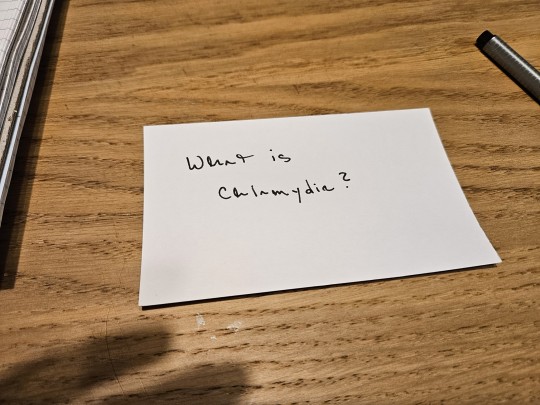
Asking the real questions
#i'm making flash cards for my microbiology test lol#for those curious: it's an obligate intracellular parasite#gram negative#and has no peptidoglycan#there is nothing else anyone needs to know about chlamydia#oscar talks to himself#school blogging
5 notes
·
View notes
Note
68, 82
satan's last name?
i didn't know that was a thing people wondered about (aka: i have no clue)
favorite word?
right now i think its smithereens or peptidoglycan. they're just very fun words to say
#peptidoglycan is pretty much waht helps differentiate between gram + and gram - cells fyi#heard it in epidemiology and have never stopped saying it#em rambles#chaos !!#thank you for the ask :)#ask game
0 notes
Text
Gram-positive vs. Gram-negative bacteria
a.k.a. the inspiration for this blog's icon

When researching your favorite species of bacteria, the first characteristic you're guaranteed to find is whether or not your bacteria is gram-positive or gram-negative. This is in reference to the Gram stain, a method of staining bacteria with dye, such that certain bacteria retain it and become purple (gram-positive), while others do not -- and after an alcohol wash, can be tinted pink with a counterstain (gram-negative). This staining procedure is almost always the first step in figuring out what kind of bacteria you're working with, and is used constantly for both clinical and research purposes.
Okay, but why? And why does the color of a dyed bacterium even matter?
The answer to these questions... lies in the structure of the cell wall. Gram-positive bacteria retain dye because their cell walls are much thicker. The typical gram-positive bacteria has one cell membrane, covered by a thick layer of peptidoglycan, which is a polysaccharide that gives structural strength to the cell. In contrast, the typical gram-negative bacteria has two cell membranes, separated by a thin layer of peptidoglycan: this layered structure is thinner and more flexible. Gram-negative bacteria can be counterstained because this outer membrane is porous, and is degraded by the alcohol wash, losing its ability to retain the original dye.
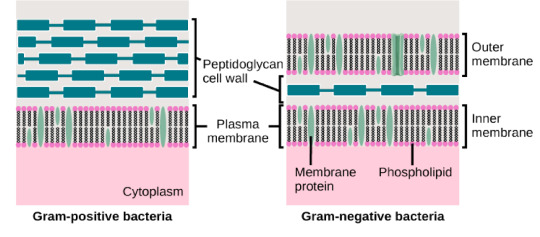
This difference in cell structure may not seem earth-shattering, but it does have some serious implications. For example, in medicine, you want to know if you're dealing with a gram-negative bacteria, because they are less susceptible to antibiotics that target the cell wall (such as penicillin): in essence, the outer membrane protects the cell. Penicillin can easily fit between the gaps in the peptidoglycan layer surrounding gram-positive cells, but not through the outer membrane of gram-negative cells, which selectively blocks the passage of toxic substances. In general, gram-negative bacteria are less vulnerable to environmental toxins.
Gram-positive bacteria have their own strengths. In fact, they have an extremely powerful tool at their disposal: unlike (almost all) gram-negative bacteria, some gram-positive bacteria are capable of forming endospores. Endospore formation is an intense survival mechanism where a bacterium creates a dormant structure inside itself (called an endospore), which is extremely durable but cannot self-replicate. When conditions have improved, the endospore transforms into a bacterium, and begins to metabolize and reproduce. Endospores can lie dormant for thousands -- and some argue, millions -- of years, and remain viable.
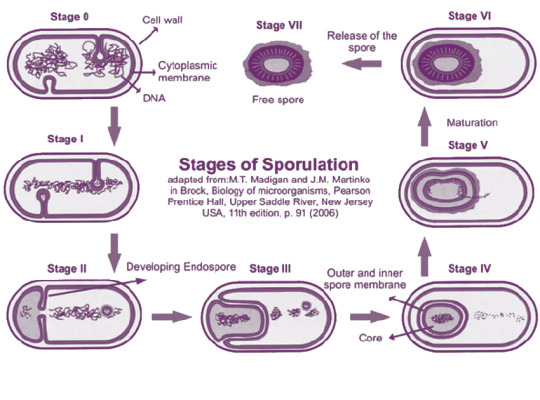
To summarize: what at first may seem like a simple question of microbial dye-jobs is actually a way to peer into the structure of a bacteria, and hopefully start to unravel the unique strategies and adaptations that the species employs for survival.
Happy Gram staining everyone!
263 notes
·
View notes
Note
hello whats your fav prokaryote? <- is a biology major and cant remember any of them :head_in_hands:
oooOOOOHHH now THIS is a fantastic question, one that I will cheat at cuz I can't pick just one.
ok first and foremost: Bacillus anthracis. God what *cant* I say about anthracis, the exotoxins are simply fascinating, there's three whole types of anthrax that are caused by different ways of them getting into the body, one of the toxins is straight up called "Leathal Toxin" liek come ON. love it
I have to give a shout out to our boys the Mycoplasma tho like, they said "oh yall are basing most of all foundational bacterial classification on the amount of peptidoglycan in their cell walls? ight cool" *exists with no peptidoglycan at all*
and then, Pseudomonas aeruginosa, beloved and bane of my existence, such an important organism in the lab setting, couldn't have gotten through medical microbiology without her <3
#microbiology#thank you for the question it made me so happy :>#i could have a whole other post on viruses or prions too#biology
16 notes
·
View notes
Text

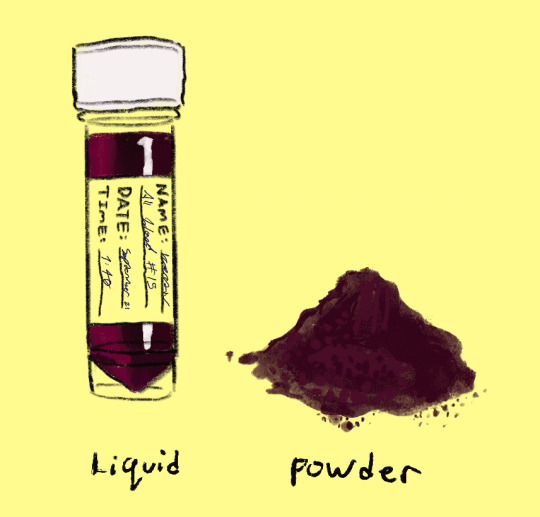
"...an artificial microbe designed to serve as a robust, shelf-stable, universally compatible blood replacement for blood transfusion ... On a macroscopic scale, the blood replacement resembles a thick purple-red fluid ... Omniblood cells contain nuclei and are ovioid in shape, superficially resembling the blood of Terran reptiles and birds. The cilia are used for weak locomotion in external environments. Hydrated omniblood cells are nucleated, purple-red, ovoid and 20 μm long, with short cilia and a thick peptidoglycan cell wall. They are designed to survive in blood plasma, ideally in pH 7.25-7.45, and contain hemoglobin and a hemocyanin-like protein in high concentrations. This allows them to serve as highly efficient oxygen carriers. Once injected into a host, the cells survive in the circulatory system, acting as blood cells, for 2-4 weeks. They are then broken down by the body and filtered out by the kidneys..."
something kerativ can bleed... works for many species
31 notes
·
View notes
Note
sapphire, lilac <3

i am so sorry i forgot to answer this until now but im glad i make your dash better im glad we can all come together under our love for images and videos and sentences
also if you study me under a microscope please dont do a gram test i hate that shit. ill just tell you up front im gram-positive. my peptidoglycan looks soooo purple when you stain me its just embarrassing.
2 notes
·
View notes
Text
name a more annoying power couple than peptidoglycans and lipopolysaccharides. peptidoglycans are responsible for disease symptoms and lipopolysaccharides resist the entry of some antibiotics. god forbid anyone mess with its queen
5 notes
·
View notes
Text
I’ve got that dog in me. That peptidoglycan layer on all the bacteria cells in my gut
4 notes
·
View notes
Text

Haha. Funny. Funny Cyanothece. She’s a hardworking gal who produces a lot of oxygen and has the world on her shoulders
If you wanna learn some funky bacteria facts look under the cut :D
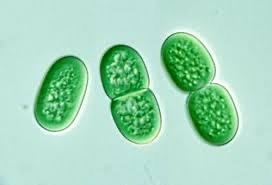
Cyanothece are a type of phytoplankton and cyanobacteria.
Fun fact! This bacteria is very widely believed to be related to the bacteria that eventually became chloroplasts in plant cells!
They are aquatic bacteria and like to live in the tropics so they can get about 12 hours of sunlight and 12 hours of darkness every day. Why? It’s the most optimal way to get the most photosynthesis and most nitrogen fixation!
For those who aren’t aware, nitrogen fixation converts Nitrogen gas into a usable form for cells to later go into the ammonia buffer or make proteins and amino acids :) (later going onto basic cell shit and dna replication) However the enzyme that helps do this breaks down in the presence of Oxygen. So since photosynthesis makes excess oxygen, they can’t happen at the same time, even while cellular respiration is taking the oxygen.
So yay light and dark cycles! Did you know that 80% of atmospheric oxygen is given to us by phytoplankton and other aquatic photosynthetic organisms! Very cool shit!
Sometimes cyanothece make these cool heterocysts which are basically nitrogen fixation hubs for a string of cyanothece. They pop up every 8-10 cells and transfer their fixed nitrogen to the other cells in return of glucose they can use for photosynthesis later. The walls are thicker to better ensure that oxygen doesn’t get in and the only stuff that comes in is the stuff it gets from it’s friends :)
Cyanothece are gram negative bacteria meaning they have two cell membranes and a thinner peptidoglycan cell well. The outer membrane outer leaflet is actually made of something called Lipid A, instead of your regular phospholipid bilayer you’re used to ;P
That’s all for now! Come by some time to learn some more bacteria stuff and watch some funky art
2 notes
·
View notes
Text
Neosporin ointment has neomycin, bacitracin, and polymyxin B.
Neomycin is an aminoglycoside antibiotic that displays bactericidal activity against gram-negative aerobic bacilli and some anaerobic bacilli where resistance has not yet arisen. It is generally not effective against gram-positive bacilli and anaerobic gram-negative bacilli. Neomycin comes in oral and topical formulations, including creams, ointments, and eyedrops. Neomycin belongs to the aminoglycoside class of antibiotics that contain two or more amino sugars connected by glycosidic bonds.
Neomycin's antibacterial activity stems from its binding to the 30S subunit of the prokaryotic ribosome, where it inhibits prokaryotic translation of mRNA. [So it inhibits protein synthesis].
Neomycin also exhibits a high binding affinity for phosphatidylinositol 4,5-bisphosphate (PIP2), a phospholipid component of cell membranes.
Polymyxin B, sold under the brand name Poly-Rx among others, is an antibiotic used to treat meningitis, pneumonia, sepsis, and urinary tract infections. While it is useful for many Gram negative infections, it is not useful for Gram positive infections. It can be given by injection into a vein, muscle, or cerebrospinal fluid or inhaled. The injectable form is generally only used if other options are not available. It is also available as the combinations bacitracin/polymyxin B and neomycin/polymyxin B/bacitracin for use on the skin [Neosporin!].
Common side effects when given by injection include kidney problems, neurological problems, fever, itchiness, and rash. Injections into muscle may result in significant pain. Other serious side effects may include fungal infections, anaphylaxis, and muscle weakness. It is unclear if use during pregnancy is safe for the baby. Polymyxin B works by breaking down the cytoplasmic membrane which generally results in bacterial cell death.
Polymyxin B was approved for medical use in the United States in 1964.[1] It is on the World Health Organization's List of Essential Medicines. It is available as a generic medication. In Europe it is only approved to be applied to the skin as of 2015. It is derived from the bacterium Paenibacillus polymyxa (formerly known as Bacillus polymyxa).
1 .Alters bacterial outer membrane permeability by binding to a negatively charged site in the lipopolysaccharide layer, which has an electrostatic attraction for the positively charged amino groups in the cyclic peptide portion (this site normally is a binding site for calcium and magnesium counter ions); the result is a destabilized outer membrane 2. Fatty acid portion dissolves in hydrophobic region of cytoplasmic membrane and disrupts membrane integrity
3. Leakage of cellular molecules, inhibition of cellular respiration
4. Binds and inactivates endotoxin
5. Relative absence of selective toxicity: nonspecific for cell membranes of any type, highly toxic.
Removal of the hydrophobic tail of polymyxin B yields polymyxin nonapeptide (PMBN), which still binds to LPS, but no longer kills the bacterial cell. However, it still detectably increases the permeability of the bacterial cell wall to other antibiotics, indicating that it still causes some degree of membrane disorganization.
Bacitracin is a polypeptide antibiotic. It is a mixture of related cyclic peptides produced by Bacillus licheniformis bacteria, that was first isolated from the variety "Tracy I" (ATCC 10716) in 1945. These peptides disrupt Gram-positive bacteria by interfering with cell wall and peptidoglycan synthesis.
Bacitracin is primarily used as a topical preparation, as it can cause kidney damage when used internally. It is generally safe when used topically, but in rare cases may cause hypersensitivity, allergic or anaphylactic reactions, especially in patient allergic to neomycin.
Bacitracin interferes with the dephosphorylation of C55-isoprenyl pyrophosphate, and a related molecule known as bactoprenol pyrophosphate; both of these lipids function as membrane carrier molecules that transport the building-blocks of the peptidoglycan bacterial cell wall outside of the inner membrane.
Some have claimed that bacitracin is a protein disulfide isomerase inhibitor, but this is disputed by in vitro studies.
3 notes
·
View notes
Link
0 notes
Text
Planctomycetota
Group: Hydrobacteria; PVC Group
Gram-stain: Negative
Etymology: For Planctomyces bekefii. From the Greek "planktos", meaning wandering or floating, and "myketes", meaning fungus. P. bekefii are freshwater plankton, and the "mykes" is due to an initial misconception that the bacteria were fungi.
About: Planctomycetota is a phylum of distinctive structure. They lack peptidoglycan in their cell walls, and species such as Gemmata obscuriglobus have inner membranes that form compartments within the cell. These compartments create relatively complex cell plans, which resemble the structure of a eukaryotic cell. It has been suggested that Planctomycetota are what a transition phase between prokaryotic and eukaryotic life could look like. I saw someone call them the "platypus of microbiology": instead of an egg-laying mammal, they're a compartmentalized bacterium.

Another trait unique to Planctomycetota is the ability to perform "anammox", or "anaerobic ammonia oxidation". You might remember from my previous posts that anaerobic bacteria are often preferable in sewage treatment, and that the ability to break down ammonia is important as well. But the real shining quality of anammox is how environmentally friendly it is: aerobic breakdown of ammonia creates greenhouse gases such as nitric oxide during intermediate steps, but ammamox can fully oxidize ammonia into nitrogen gas without the harmful byproducts. Plactomycetota, therefore, are uniquely relevant and useful in wastewater treatment.
Some Planctomycetota have the remarkable ability to reproduce by budding. This is a rare reproductive strategy, as most bacteria reproduce by dividing (generally in a process called "binary fission"). This "budding" can be a beautiful process: the Planktomyces bekefii do it by first creating a flower-like structure, consisting of several stalked appendages. The round ends of these stalks are then able to produce buds, as shown in the image below.

11 notes
·
View notes
Text
Peptidoglycan is my new favorite word. PEPPY DOG LYCAN??? YEAH BABY!!!!
0 notes
Text
Classification scientifique des espèces — Wikipédia
See on Scoop.it - EntomoScience

Classification scientifique des espèces - Wikipédia
Dans les sciences du vivant, la classification scientifique des espèces (également nommée " classification biologique ") correspond à l'association de la systématique, qui est la méthode ou ensemble de méthodes permettant de classer le vivant, et de la taxonomie, qui est le résultat de la méthode de classification.
Dans les sciences du vivant, la classification scientifique des espèces (également nommée « classification biologique ») correspond à l'association de la systématique, qui est la méthode ou ensemble de méthodes permettant de classer le vivant, et de la taxonomie, qui est le résultat de la méthode de classification.
La dernière modification de cette page a été faite le 5 février 2024 à 18:18.
[...]
Classification phylogénétique
"... La classification en cinq règnes de Robert Harding Whittaker (1969) a été ramenée à trois domaines, les premiers de la classification de l'ensemble du vivant :
les archées sont des organismes unicellulaires à structure procaryote. Ils possèdent une paroi cellulaire constituée de lipides spécifiques et sont souvent (mais pas toujours) des extrêmophiles ;
les bactéries sont des organismes unicellulaires à structure procaryote (leur matériel génétique n'est pas enfermé dans un noyau). Ils possèdent une paroi cellulaire constituée de peptidoglycane ;
les eucaryotes peuvent être unicellulaires ou multicellulaires. Leur matériel génétique est enfermé dans un noyau délimité par une enveloppe ; ils peuvent posséder des mitochondries ou des chloroplastes mais certains unicellulaires n'en possèdent pas ; la multiplication cellulaire a lieu par mitose ; l'ADN est divisé en chromosomes et ils présentent une reproduction qui peut être de type sexuée ou asexuée selon les organismes ou même une alternance des deux types pour certains métazoaires comme les abeilles."
[Image] Schéma de la classification classique.
0 notes